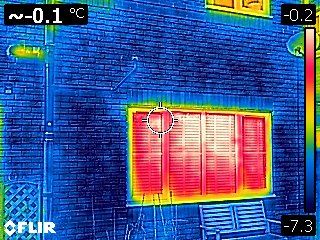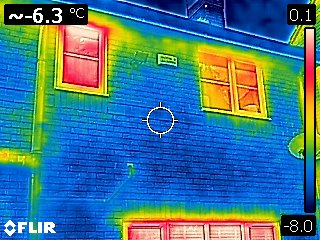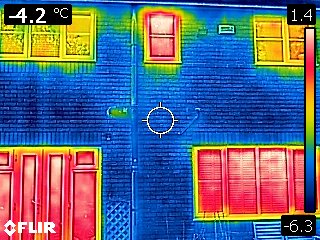Hi there,
I have just borrowed the thermal camera from the carbon co-op. Its been great to spot how terrible my loft insulation was as well as identify the cold spots around my wood burner.
I could do with some advice/interpretation on how the external of my house has been performing. I’ve previously posted how I’ve had issues with my cavity walls ([Bubble wrap foil - Cavity Wall Insulation - What can be done? (Bubble wrap foil - Cavity Wall Insulation - What can be done?) Well I managed to get outside to check the house, I was expecting the walls to be quite warm but they “looked” great compared to the windows (they are 20 years old to be fair) but am I reading this right? In my head, if I had a well-rounded house then the walls and windows should be roughly the same shade colour i.e. low heat loss, but to see such differentials am I to conclude that most of my heat is escaping via the windows and not the walls at the moment? FYI House was 19 degrees and it was -1 degrees outside




